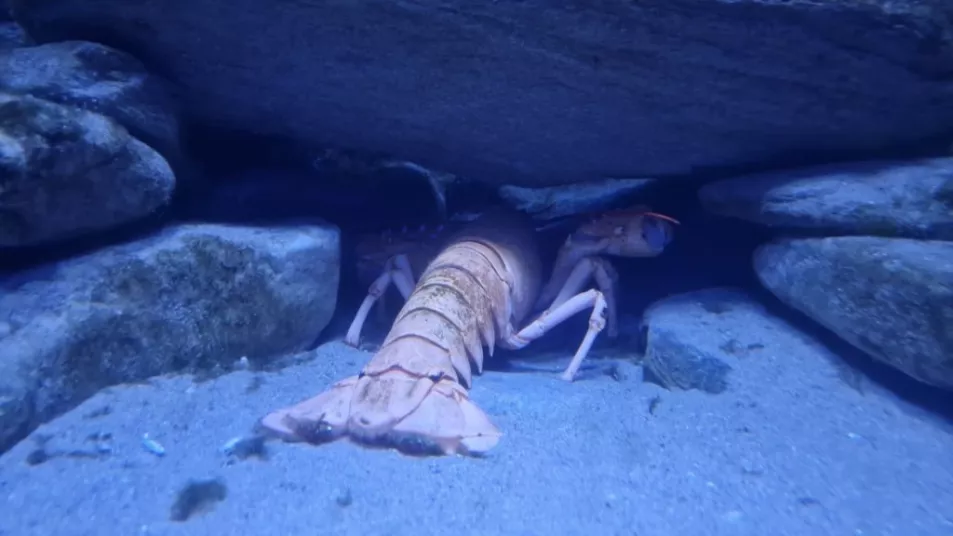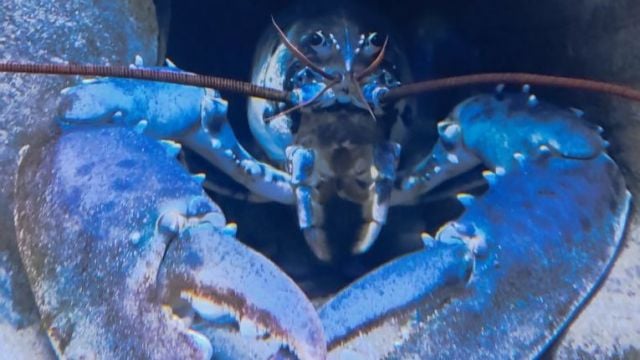Staff at an Irish aquarium have been left baffled as to why their extremely rare white lobster is gradually turning blue.
The rare albino lobster has been living at the community-run Achill Experience Aquarium in Co Mayo since he was discovered off the nearby coast six years ago and has become a huge attraction for tourists.
He is affectionately called Charlie after the fisherman Charlie O'Malley who caught him off the Achill coast in 2017. It is estimated that only one in 100 million lobsters are white or albino.
The crustacean was discovered when a beach in the village of Dooagh reappeared after 33 years, after waves washed all the sand away, and it disappeared in spring storms in 1984.

Tonnes of sand was dumped by a freak tide over 30 years later, recreating 300m of golden beach. Charlie has been a firm favourite at the tourist spot since then but staff have noticed a gradual blue hue on him in the last four years.
"Albino lobsters only live between three to five years because they can easily be seen by predators at sea. Charlie was already an adult when he was caught so we estimate he could be about 14 years old," said Kevin Garvin who is one of the aquarists at the Achill Experience.
"Every time he moults (changes shell) in order to grow, which is every 12 to 14 months, we see the blue colour which is gradually getting stronger.
His next moult is due in the coming months. "He is healthy and his water is local sea water which is constantly tested. Visiting vets have said it is highly unusual to see this in an albino lobster.
"We have a few theories in that it could be his age that is causing the blue tint or his diet, which is and has always been fish. But again, these are just theories so we don't know for sure."
The informative venue which attracts 30,000 visitors a year is also home to a rare orange lobster named Rusty which was caught off Cleggan in Galway by fisherman Cathal King and the aquarium has just received a new bright blue lobster called Bluey, which was caught in Sligo by Michael Kelly.
Orange lobsters are reported to occur in one in 30 million, while statistics say that blue lobsters occur in one in two million.
"Lobsters eat a carotenoid pigment in their plant food called astaxanthin. This pigment is stored in a lobster's skin underneath its hard outer shell. Over time, the pigment begins to migrate into the shell, where different shell proteins alter the pigment to store it, changing its colour to a dark blue," explained Kevin.
"Due to genetic disorders, some lobsters lack the ability to allow the proteins to change the pigment colour, hence some are white, some are orange and some can also be light blue. "We try and release all the crustaceans back into the ocean but we will have a serious discussion about releasing the rare species as they can potentially be eaten by predators fairly quickly.
"A few years ago, we had a female blue lobster whose eggs weren't viable as they weren't fertilised so we released her back into the ocean so she could reproduce. "We are very committed to conservation here and it is so rewarding to give marine life that we nurtured from a very early age back to the sea.".







